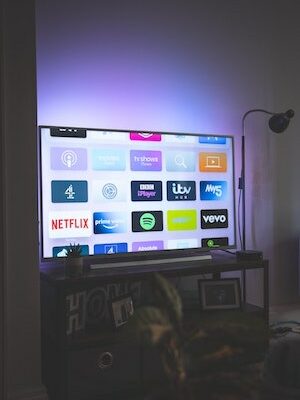
Get the most out of your audio with an enhanced Audio Return Channel (eARC)
What is eARC?
eARC is an improved version of ARC (regular Audio Return Channel). Before ARC, you had to use an analogue or optical cable to transmit digital audio from your television to your AV Receiver or Soundbar. HDMI ARC simplified cable management, as it provides that returning audio signal feature within the HDMI cable.
As Smart TVs began to dominate the market, it became increasingly necessary to improve the Audio Return Channel connection to support higher forms of audio formats, as streaming services began to increasingly support object-based audio formats.
Where ARC and eARC differ is in the data transfer rates capabilities.
Data transfer rates refer to the amount of data that is transferred at a given time or the range of frequencies. A pipe with a limited diameter can only transport a limited amount of water at a time. Data within a cable is no different. There is a significant increase in the bandwidth of the enhanced Audio Return Channel (eARC) over its predecessor, having two conductors instead of just the one for ARC.
eARC supports more than the original 8 channels of audio at much higher bandwidths. This makes eARC superior to TOSLINK or HDMI ARC with superior resolution and support for formats such as Dolby Atmos, DTS-X and Auro-3D. These formats require greater resolution with up to 32 individual audio channels. Furthermore, higher data rates make digital audio signals more powerful, vivid and detailed, since they aren’t compressed.
Table 1: Comparison of audio return connections

I want better audio performance, how do I get it?
To support eARC you need the following:
- A TV that supports eARC – look for one or two HDMI ports labelled eARC on the device.
- An eARC-supported AV Receiver or Soundbar – again this should be labelled on the device.
- An Ultra High-Speed Certified HDMI Cable (there may be some older cables that support this function).
eARC may need to be enabled in the TV, Soundbar or AV Receiver, usually through an on-screen menu.
eARC is a requirement of Ultra High-Speed Certification, so all cables with this certification will support it. Always ensure you have purchased a genuine certified cable. Every genuine certified cable will have an anti-counterfeit label with a QR code. To ensure you are getting the real deal, download the HDMI Certification app on your phone and scan the QR code to make sure the product matches the HDMI licensing information. Unfortunately, it is all too easy for inferior products to copy a logo and print it. A few seconds spent checking your cable’s certification can save you much more time and heartache second-guessing the audio performance of your home entertainment setup!
How does eARC function?
Rather than the normal transmission direction of sending the audio and video from your source (such as a set-top box) to your TV or Projector, eARC takes the audio from your TV and sends it back to your AV Receiver or Soundbar. The reason this is necessary, is that TVs and Projectors increasingly support built-in apps. These apps now offer much better audio and you may wish to experience this better quality through higher-quality audio devices.
Will my old HDMI cables support eARC?
That depends…
Your older HDMI cable may support eARC if it is certified as ‘Standard with Ethernet’ or ‘High Speed with Ethernet’, since the audio is sent back using the ethernet channel inside the HDMI cable. This should work most of the time when you are using a short cable (3m or less) and the cable has been properly terminated.
It is important to note that the HDMI Ethernet Channel (HEC) is designed to carry only 100Mb of data and ethernet works differently from eARC. This is why eARC support is difficult to guarantee. If you prefer using a longer cable, the best approach is to simply ‘try and see’. As always, we recommend testing the cable with the system before installing anything into a wall.
Other problems include mislabelling or manufacturers cutting corners by terminating the ground wire or shield inside the cable and calling it ‘with Ethernet’. These products will simply not work and best practice dictates sourcing certified cables from a reputable brand guaranteeing these standards of performance.
Another common issue could be your TV. Given you have connected the correct socket, your TV could lack the output power to drive longer cables. A simple solution is to have a cable with a better – usually thicker – eARC/ethernet channel, although that can be difficult to find in the specifications of a cable.


In conclusion
In order for eARC to work, all older cables labelled ‘with Ethernet’ should be 3m or less. There’s no harm in trying your longer ‘with Ethernet’ HDMI cable, as it may be using better grade construction and support this feature. Failing that, get yourself a new Ultra High Speed certified cable.
HDMI cables with Ethernet function have been available from Kordz since 2007.
This feature was considered ‘optional’ at the time. However, we are committed to ensuring Ethernet functionality as standard across our products. As technology has matured on each end of the HDMI cable, our efforts to support Ethernet as a standard feature have allowed us to support the latest eARC for immersive and high-resolution audio formats of today, including the latest ultra high definition content available on today’s most popular streaming services.
Learn more about the importance of product certification in this article.
Check out the newest generation of certified Kordz professional grade PRS4 HDMI cables supporting eARC.
© 2024 Kordz International. All Rights Reserved.
Please note, re-publishing of the contents of this article is prohibited; however, Kordz encourages the link to this page to be shared. If media, distributors, educators or others wish to share this information, we request you author your own post or article and link it to this page on kordz.com.